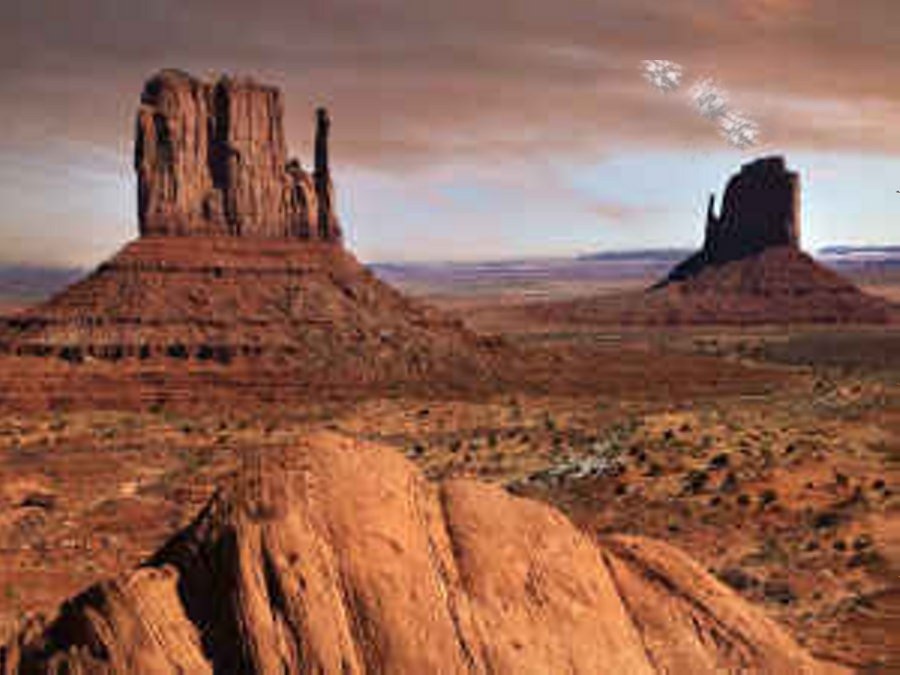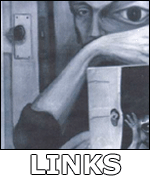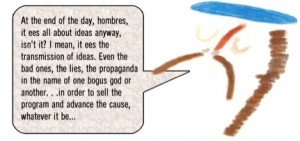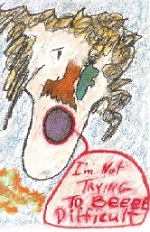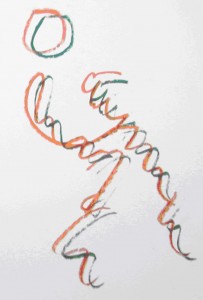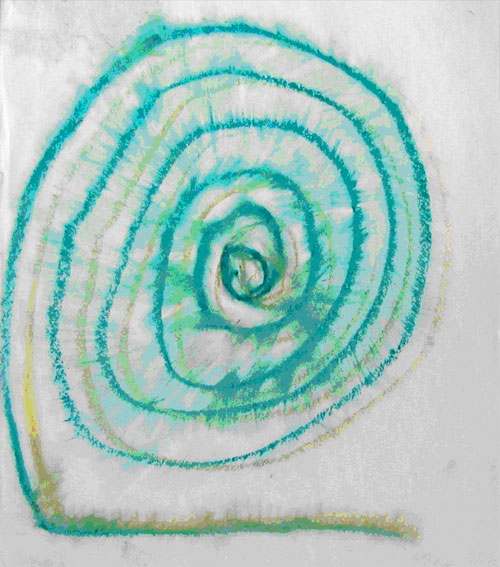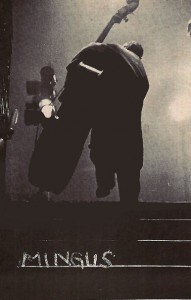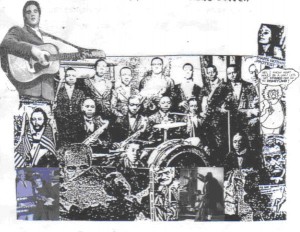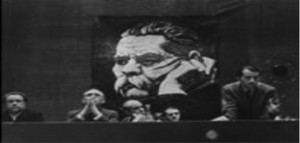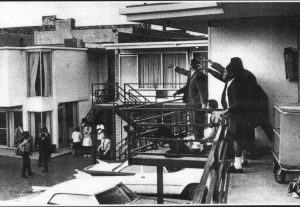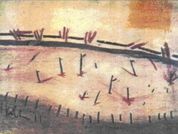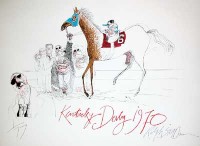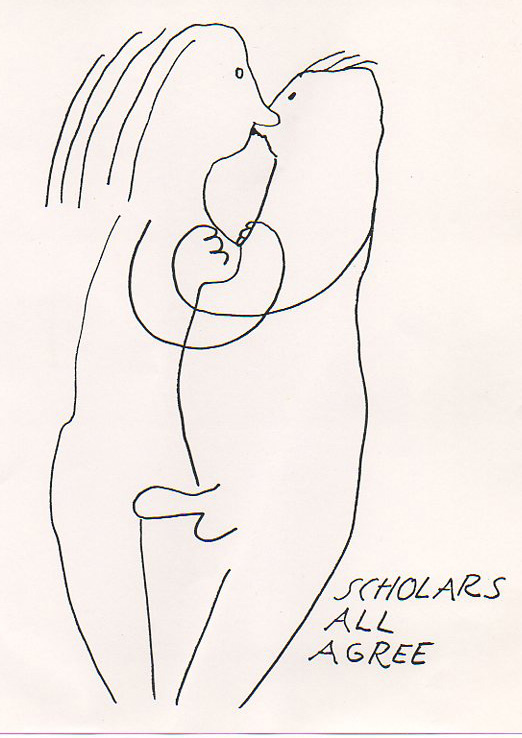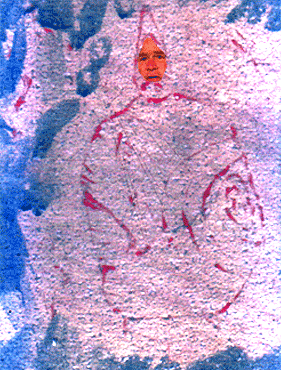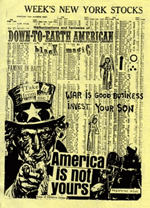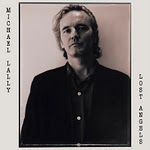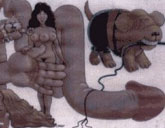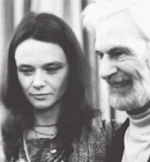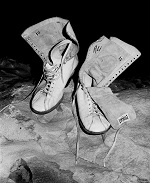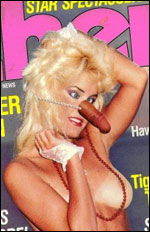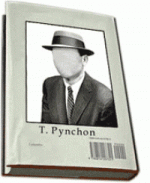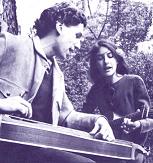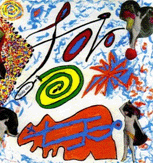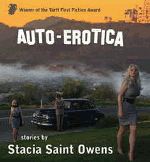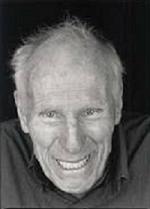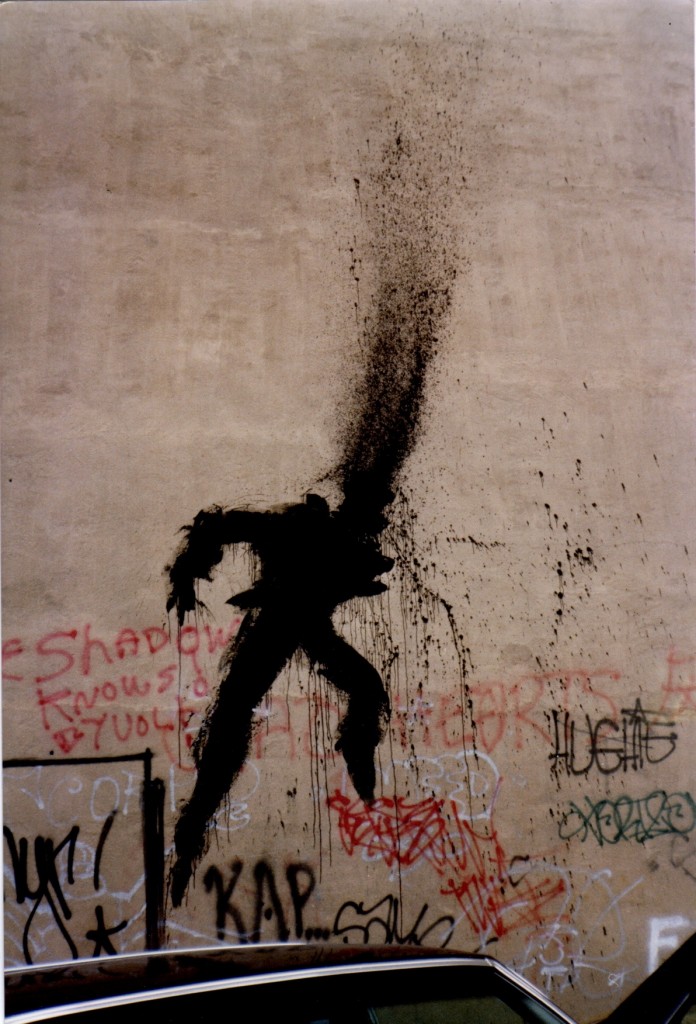THE BEATS: REMEMBERING THE TEA
an excerpt from Ellen Pearlman’s
NOTHING & EVERYTHING
The Influence of Buddhism on the American Avant-Garde 1942-1962
on the roof
talking quietly, sadly
This spurred all of them into a spontaneous writing session, with Kerouac and Ginsberg choosing the same topic
Big books packaged
from Japan—
Ritz crackers
because right in front of them was a big red box of Ritz crackers, sitting underneath a shelf of books from Japan.
Feeling more relaxed, Kerouac mentioned that he had experienced “some samadhi—a half hour or maybe three seconds.” Ginsberg asked Suzuki who the “Bodhisattva” was who constructed the first Buddhist temple in San Francisco’s Chinatown, and Suzuki adroitly replied, “I think they were all Bodhisattvas.”
Finally it was time for them to leave to go to Kerouac’s book party. By now Kerouac felt like Suzuki was his “old fabled father from China” and said, “Dr. Suzuki! I’d like to spend the rest of my life with you.” Suzuki responded, “Sometime,” and pushed them out the door, but once they were out on the sidewalk, he wouldn’t let them leave. He shook his finger back and forth and shouted, “Remember the green tea!” Kerouac yelled, “The key?” and Suzuki shouted back, “The tea!”
That moment did hold a “key.” Suzuki, an authentic representative of Japanese Zen Buddhism, had met Kerouac, Ginsberg, and Orlovsky, who advanced the Beat craze with its concurrent literary cult through their works. Suzuki, to his credit, understood the importance of these young men. He wrote, “The ‘Beat generation’ is not a mere passing phenomenon to be lightly put aside as insignificant. I am inclined to think it is somehow prognostic of something coming, at least, to American life.”
Suzuki was interested in Kerouac because the American writer had dedicated his previous book, The Dharma Bums, to the Tang Dynasty Zen (Ch’an) poet Han Shan, a great figure in Chinese cultural literature. But Suzuki also believed the young men had “not yet quite passed through their experiences of humiliation and affliction and . . . revelation.”
The “key” was part of Ginsberg and Kerouac’s search for a “new vision,” through which they birthed a spontaneous literary form inspired by ecstatic and mind-numbing trips across America, jazz music, sordid swindles, drugs, homosexuality, adultery, suicide, and even murder. They burned for something unique that had never been realized in the West before, seeking to transform the very fabric of their being.
Suzuki shared his feelings with Okamura about these young men. He thought Kerouac’s biggest flaw was that he “misunderstood the essence of freedom . . . Freedom is from Dr. Suzuki’s point of view [working] in the harness . . . and [Kerouac was unable] to overcome all of that and to understand it.” According to Okamura, the point where the Beats fell short was in misunderstanding the essential Zen point that we are already free, and “it is the human mind that thinks we are not free . . . To look for freedom outside of our own original freedom is already an aberration of the mind . . . We are not apart in the original state.” She felt the Beat generation thought they had to “liberate themselves from what was totally unnecessary.” Suzuki noted, “They are struggling, still rather superficially against democracy, bourgeois conformity, economic respectability, conventional middle-class consciousness, and other cognate virtues and vices of mediocrity. Because they are still ‘rootless’ . . . they find themselves floundering in the mud in their search for ‘the only way through into truth [which] is by way of one’s own annihilation: through dwelling a long time in a state of extreme and total humiliation.’
They have not yet passed through their experiences of humiliation and affliction, and, I may add, revelation.” The poet Gary Snyder said, “Though it’s a charming thought, DTS had almost no influence on the ‘spontaneity’ element in the writing of Kerouac, Ginsberg, & me. For Jack it came through his understanding of jazz musicianship. Ginsberg picked it up from Jack. I got it from Jack plus R. H. Blyth’s view of haiku. Suzuki’s writings reaffirmed some of that, but Sokei-an’s writings (which I read almost as early as Suzuki) also always stressed traditional hard training—which is what Zen means to most Americans today.”
Visiting Suzuki was also part of a long process to find a “new vision.” Kerouac expressed this sentiment in a September 1945 letter to Ginsberg: “I was telling Mimi West last summer how I was searching for a new method in order to release what I had in me, and Carr said from across the room, ‘What ’bout the new vision?’ The fact was I had the vision . . . I think everyone has . . . What we lack is the method.” The method he was grappling with was how to drill down deep into the nature of raw consciousness and transform it into a unique literary form.
Decades later Ginsberg addressed this search specifically in an interview with the Shambhala Sun. “So we began talking about what, in 1945, we called ‘New Consciousness,’ or ‘New Vision.’ As most young people probably do at the age of 15 to 19, whether it’s punk or bohemia or grunge or whatever new vision adolescents have, there is always some kind of striving for understanding and transformation of the universe, according to one’s own subjective, poetic generational inspiration.
By the time he met Suzuki, Kerouac had begun studying the dharma on his own. He had experienced the innate nature of his own mind numerous times but had no one to guide him, only a few books to read and a smattering of friends to talk to about it. But once Kerouac’s literary reputation was assured and fame overwhelmed him, his interest and devotion to Buddhism faded.
Through a combination of alcoholism and long bouts of living with his overprotective mother, he returned to the Roman Catholicism of his youth. But before he was through, his inquiry into the dharma changed the lives of Ginsberg, their circle of mutual friends, and generations all over the world.
The Blake Vision, and the “New Vision”
In the summer of 1948, Allen Ginsberg sublet a small sixth-floor apartment from fellow student Russell Durgin on East 121st Street in Harlem and led a retreat-like existence. Most of his friends had departed on their summer vacations or moved abroad. His greatest sustained contact with the outside world came from a menial job two hours a day as a file clerk at the American Academy of Political Science.
In a series of poems, The Book of Doldrums, Ginsberg chronicled his overweening existential angst. One early summer evening, having just masturbated, he lay contentedly spent and stared out his open window, surveying the intricate shapes of the rooftops of Harlem. A book by the poet William Blake lay on his lap. Out of nowhere a “deep earthen grave voice” began reciting Blake’s poem “The Sunflower,” and it became an “auditory hallucination”:
Ah Sunflower! weary of time,
Who countest the steps of the sun;
Seeking after that sweet golden clime,
Where the traveler’s journey is done;
Where the youth pined away with desire,
And the pale virgin shrouded with snow
Arise from their graves and aspire
Where my sunflower wishes to go.
The “tender and beautiful voice” he heard “was Blake’s voice.” He understood he was experiencing the exact same perception Blake had experienced a century before, of an unfurling of raw consciousness. Poetry, the language of vision, linked him back though time with other visionary poets. He had been born just for that moment and no other reason. The fact that he existed was proof for his being on earth. He was experiencing the “spirit of the universe.” The whole world was contained within the sunflower, expanding outward to contain the poem and all of consciousness itself.
Several minutes later the voice intoned another Blake poem,
“The Sick Rose”:
O rose, thou art sick!
The invisible worm
That flies in the night,
In the howling storm,
Has found out thy bed
Of crimson joy:
And his dark secret love
Does thy life destroy.
Doom was as necessary as glory; both were valid, and both had their place.
Ginsberg yearned for the infinite. Gazing over the Harlem rooftops and seeing the “intelligent labor” that went into making the buildings, he realized the world was not made of “dead matter” but living intelligence. This intelligence was ancient and connected him back to the beginning of time. But he had no formal or informal vocabulary for what he saw, thinking it was “God” or “Light.” He crawled out his fire escape and tapped on his next-door neighbor’s window, declaring that he had just seen God. The two girls inside reacted in typical New York fashion by slamming their windows shut, despite the steamy summer heat. None of his friends were in town, so there was no one to turn to. He read the books strewn about him—Plato’s Phaedrus, St. John, and Plotinus—and saw divine messages in all their texts. Trying to control this buoyant feeling, he stood in his kitchen and called upon the “spirit” to make him “dance” like “Faust calling up the devil,” but his elation rapidly deteriorated into terror. In an early book of poems, The Gates of Wrath: Rhymed Poems, 1948–1952, he tried recapturing these ecstatic feelings in a larger work he titled “Vision 1948.” Ginsberg kept trying to recreate his experience from 1948 until 1963, when he met the Tibetan Ningyma Lama Dudjom Rinpoche in India. When he told Rinpoche about both his spontaneous visions and his subsequent psychedelic drug experiences, Rinpoche advised him, “If you see anything horrible, don’t cling to it. If you see anything beautiful, don’t cling to it.” Hearing that, Ginsberg gave up grasping after the original experience, though he never renounced its mind-boggling effect.
The day after Ginsberg’s visions, heaven flipped straight into hell. While browsing through Blake’s The Human Abstract in the Columbia University Bookstore, the shift of consciousness came again but with a different slant. Everyone in the bookstore appeared “wounded” and like a “neurotic pained animal.” He felt he was walking around in Blake’s London and seeing “marks of weakness and marks of woe.” The bookstore clerk’s face resembled a tormented giraffe, and everyone appeared to hide a secret awareness of cosmic consciousness and knowledge of their looming death. Habitual conduct and stratified social protocol blocked these revelations from permeating their everyday sensibilities.
About a week later, as he walked to the Columbia library, it happened again. “I started invoking the spirit, consciously trying to get another perception of cosmos.” And he did, but this time was more frightening than the last: it was a “serpent fear” comparable to the “hand of death.” It was only years later Ginsberg acquired the vocabulary to describe his experience. “And I had a sense of the black sky coming down to eat me. It was like meeting Yamantaka without preparation, meeting one of the horrific or wrathful deities without any realization that it was a projection of myself or my nature. I tried to shut off the experience because it was too frightening.” Yamantaka, the lord of death, is a Mahakala or wrathful deity in the Tibetan Buddhist pantheon. Yamantaka is a Sanskrit word consisting of Yama, “the lord of death,” and Antaka, or “one who ends.” Yamantaka is one of the eight protectors of the teachings of the Buddha and an aspect of Manjushri, the Buddha of intelligence and wisdom.
In the 1940s there was no understanding of the pantheon of wrathful deities in Tibetan Buddhism. An overweening dread or horror as an archetype could only be described in pathological terms. Ginsberg intuited that his vision was not insanity, but a new perception of reality. However, Ginsberg wept, and Kerouac wrote in his diaries that it was because he believed “nobody wanted to hear his new ‘silence and transcendence’ visions.” Kerouac pointed out that since they were silent, they could not be spoken about, and how could you understand that which was not spoken? However, he admitted “the Big Truth hovered near, touching us almost with its unknown wings.”
Ginsberg’s intuitions and insights were prescient. In 1959 he told the journalist Alfred Aronowitz that the Beat generation were “prophets howling in the wind” against the insanity and conformity they saw around them. But nobody thought Ginsberg was a prophet that summer of 1948, and many (most notably his father Louis) doubted his sanity. Ten years later Aronowitz gutted the whole meaning of “Beat” when he published his twelve-part series titled “The Beat Generation” in the March 9, 1959, issue of the New York Post. He called them “lost, furtive, not in touch.” This became the de facto media definition, but Kerouac clearly stated “Beat” meant “religiousness, a kind of second religiousness.” Ginsberg called Beat “a certain nakedness, where you see the world in a visionary way,
what happens in the ‘dark night of the soul.’” But how could a first, almost-crazed glimpse of the “new vision” lead to the creation of a literary, social, and artistic movement?
I Take Refuge
In 1952 Kerouac crooned the Buddhist refuge vows to Ginsberg in Pali, the rococo language that predated Sanskrit. He recited the words in the manner of a Sinatra love song:
Buddham Saranam Gochamee
Dhamman Saranam Gochamee
Sangham Saranam Gochamee
I take refuge in the Buddha
I take refuge in the Dharma
I take refuge in the Sangha
Later in his life Ginsberg defined the “three jewels,” explaining that Buddha was the awakened clear mind, dharma was the intellectual explanation of that awakened mind though sutra discourses, and sangha was the group of “fellow awakened meditators.”
Kerouac’s Pali crooning session inspired Ginsberg to browse through the New York Public Library collections of Chinese paintings of the S’ung Dynasty. He let himself drift into the spaciousness of the calligraphic brushstroked landscapes and wrote a poem, “Sakyamuni Coming Out from the Mountain,” based on a twelfth century painting by Liang Kai, imagining what it must be like to emerge fresh from the moment of enlightenment.
he knows nothing
like a god: shaken like a god:
shaken
meek wretch-
humility is beatness
before the absolute
world.
He checked out Suzuki’s book Zen Buddhism and wrote to his friend Neal Cassady that Suzuki was an “outstanding 89yr old authority now at Columbia who I will I suppose go see for interesting talk.” He came to the conclusion that satori, or Zen enlightenment, was similar to his initial Blake vision, later saying that it “seemed to be the right fitting word for what I had actually experienced so that I got interested in Buddhism.”
The Road
One year after Ginsberg’s Harlem vision, Kerouac and his friend Neal Cassady, a former car thief and small-time huckster, drove across America in a frenzied jaunt as “two broken-down heroes of the Western night,” searching for, among other things, their version of a “new vision.” These trips were later immortalized in Kerouac’s books On the Road and The Dharma Bums as a spontaneous stream of consciousness, an energetic, unedited ramble.
Ginsberg employed that same approach in his writing, calling it “first thought, best thought.” He realized that his poetry and Kerouac’s prose were rooted in an “examination of the texture of conciousness.” He tracked his mind through spontaneous prose and the “actual sequence of thought forms.” In 1994, when dedicating the Ginsberg Library at Naropa University in Boulder, Colorado, Ginsberg amended his view on “first thought, best thought.” He said “there is a silence which exists through the words. Instead of ‘first thought, best thought,’ do ‘first thought, no thought’ and see what comes from that.”
According to the musician and composer David Amram, who worked with Kerouac and Ginsberg on the movie Pull My Daisy, “Jack was . . . always looking and searching, and he felt that life was a journey . . . a kind of endless trip on that road to enlightenment and salvation. When he spoke about the holy path I think that he was thinking almost in terms of the life of Buddha . . . an experiential way for anyone to live first for themselves, and then in terms of their own journey how to relate to others on the way; with humbleness and love and sincerity and self-effacement and consideration and compassion.”
The 120-Foot Long Scroll
Cassady asked Kerouac to teach him how to write fiction. As part of his tutorial Cassady whipped out a stream-of-consciousness missive referred to as the “Joan Anderson letter,” named for his girlfriend at the time. The letter was a revelation dropped into both Kerouac’s and Ginsberg’s laps, containing techniques to capture their nonstop, spontaneous ramblings. The effect on Kerouac was mind-boggling, giving him the internal permission to shed the more formal style he had used in his first novel, The Town and the City, and compelling him to write the book that had been percolating inside him for over four years.
Kerouac mentioned this pivotal letter in a discussion with Al Aronowitz, saying, “I changed my style from The Town and the City because of Neal—Neal Cassady. Because of a forty-thousand-word letter that Neal wrote me. He wrote me a forty-thousand-word letter! But Allen lost the letter, or Gerd Stern did, actually. Gerd Stern, he lived on a barge in Sausalito. He lost that great letter, which was a work of literary genius. Neal, he was just telling me what happened one time in Denver and he had every detail. It was just like Dostoyevsky. And I realized that’s the way to tell a story—just tell it! I really got it from Neal.”
Through Ginsberg Kerouac met twenty-year-old Joan Haverty and in a whirlwind courtship married her. Then on April 2, 1951, he began a nonstop, twenty-one-day typing binge on an elongated scroll of tracing paper helped by prodigious amounts of caffeine and, some argue, speed. He wrote “without consciousness” in a semitrance, using phrases that sounded like ambulating jazz riffs.
He typed on one continuous 120-foot roll that he had pasted and taped together from separate twelve-foot-long strips. He typed without paragraphs, occasionally crossing out words, phrases, and even whole lines with a pencil.
Years later he showed Aronowitz the scroll and told him, “It’s a hundred feet long. I wrote On the Road on another roll . . . a roll of . . . drawing paper that you draw through. For Dharma Bums I could afford the teletype roll. Three dollars . . . On the Road, I gave that roll to Viking. It was all no paragraphs, single-spaced—all one big paragraph. I had to retype it so they could publish it. Do people realize what an anguish it is to write an original story three hundred pages long?”
In June, after completing his creative maelstrom, he left Joan and moved into his friend Lucien Carr’s loft to keep revising On the Road. He then joined William Burroughs in Mexico to work on expanding his writing technique. In a letter to Cassady dated May 1952, he mentioned that his friend Ed White had suggested he “sketch in the streets like a painter but with words . . . Now here is what sketching is . . . everything activates in front of you in myriad profusion, you just have to purify your mind and let it pour the words . . . and write with 100% personal honesty both psychic and social . . . and slap it all down shameless, willy-nilly, rapidly until sometimes I got so inspired I lost consciousness I was writing. Traditional source: Yeats’ trance writing, of course. It’s the only way to write.”
By 1953 Kerouac had finished typing his novel The Subterraneans in three twenty-four-hour stints of nonstop “bennie” (Benzedrine) popping. Not sure what to do next, he played with the idea of living in nature and went to the library to find out how to do it. At first he read Thoreau’s discussions of Hindu philosophy and then accidentally checked out The Life of the Buddha by Ashvagosa. It was through this accident that Kerouac discovered his profound and serious interest in his “second new religion.” Although he never renounced Roman Catholicism, which was the religion of his birth, all those cross-country journeys depicted in On The Road, all that playful Sinatraesque crooning to Ginsberg, blossomed into his “road of dharma,” or Buddhist path. His detailed studies of Buddhism were completed before On the Road was ever published. He tentatively called his studies “Book of Dharmas,” a collection of handwritten and typed pages begun as notes he prepared for Ginsberg to use as a Buddhist primer. Viking Press published these notes posthumously in 1997 as Some of the Dharma.
Some of the Dharma
I still remember the first real dharma instruction I got from Kerouac . . .“All conceptions as to the existence of the self, as well as all conceptions as to the nonexistence of the self, as well as all conceptions as to the existence of a Supreme Self, as well as all conceptions as to the nonexistence of a Supreme Self, are equally arbitrary, being only conceptions.”
—ALLEN GINSBERG (NAROPA INSTITUTE WEBSITE)
In 1954 Kerouac went to the library in San Jose, California, and checked out Dwight Goddard’s A Buddhist Bible. He began a serious reading of that text, as well as readings in the Bhagavad Gita, yoga precepts, Vedic hymns, Buddhist sutras, and the writings of both Lao Tzu and Confucius. He poured over the Theravadin (original teachings) and Mahayana (later teachings) texts and briefly touched on Vajrayana (secret teachings), including those of the great yogi hermit Milarepa. He took notes, quickly amassing a hundred or so pages.
All three of the yanas or “vehicles” work with conflicting emotions, referred to as kleshas, or “heaps” of obscurations. The Theravadin approach recognizes the kleshas and fights against them by applying different mental antidotes. In the Mahayana the kleshas are taken along the path and worked with by deep examination and using different skillful methods to loosen attachments. But the Vajrayana transforms the kleshas into wisdom by working with them as part of one’s nature, a very tricky thing to do without the guidance of an experienced teacher.
Ginsberg, coming from an ex-Communist, Jewish, intellectual background, felt conflicted when he heard about the First Noble Truth. He believed in a vague universal improvement of the human condition and felt insulted when Kerouac told him over and over again the truth of suffering, though a scant two years later he admitted Kerouac’s wisdom. Viewed through the lens of his terrifying experiences at the Columbia University bookstore, when everyone’s faces transformed into masks of suffering, it shows tremendous denial. Kerouac was the first one to place Ginsberg’s visions squarely into a context other than pure insanity.
Kerouac wrote Ginsberg on May 1954, “I have crossed the ocean of suffering and found the path at last. And am quite surprised that you, innocent, novice-like, did enter the first inner chamber of Buddha’s temple in a dream.”30 He began teaching him as if he were the innocent novitiate and told him that he had been compiling notes on Buddhism for Ginsberg’s personal edification: “Now Allen, as Neal or Carolyn can tell you, last February I typed up a 100-page account of Buddhism for you, gleaned from my notes, and you will see proof of that in several allusions and appeals to ‘Allen,’ and I have that here, if you really want to see it, I will send it importantly stamped, it’s the only copy, we must take special care with it, right? ‘Some of the Dharma’ I called it, and it was intended for you to read in the selva.”
Kerouac also advised that Ginsberg should listen to his words as if it were “Einstein teaching you relativity,” a terribly overblown statement. He assigned him nine books to read, including those of Paul Carus, who started Open Court Press and was the first employer of D. T. Suzuki in the West. He also told him to read the Harvard Asian Classics, Buddhist legends, the life of the Buddha, and even the original Vissudhi Magga by Buddhaghoshna, the earliest scriptures of the Buddha translated from Pali. He commented on certain books in the list, making sure to let him know which points he considered essential.
While in California after a silly quarrel with Cassady, Kerouac packed his belongings and moved into a fleabag hotel in San Francisco. Drinking heavily, he completed the poem “San Francisco Blues” but quickly turned his focus back to New York.
Back East
Kerouac moved in with his mother, Gabrielle Ange Levesque Kerouac, who was living in Richmond Hill in Queens, New York. Memère, as she was known, worked in a shoe factory. Kerouac handed over his unemployment checks to her and led a quiet life studying Buddhism and attempting to follow a real spiritual path by reading the early sutras oriented toward monastic practice. Burroughs did not agree with what Kerouac was doing and cautioned if he went too far he would resemble the Tibetan Buddhist monks who walled themselves into a small cell with a slot where their food was pushed in and they remained until they died.
Kerouac’s highly attuned but flawed sensibility conflicted with his battle with alcoholism, which eventually caused his death. In another era when teachers were more available, he might have integrated his flaws into his spiritual path. Buddhism’s scope is broad enough to encompass the wisdom of the drunk Zen master or the overindulgences of the sixth Dalai Lama, who drank and consorted with women. The tantric tradition allowed for all types of people because it worked with Bodhicitta, the basic nature of mind. But was Kerouac really a Buddhist? According to Aronowitz, Kerouac wistfully mused, “Was I a Buddhist then? Well, I couldn’t be—a Buddhist has got to be alone.” He laughed at the thought. “A night club Buddhist!” Then he reflected for a moment. “Ahhh, I was a Buddhist, yeah . . .” He added, “I’m not interested in politics. I’m interested in Li Po. He was a Dharma Bum type, a poor poet roaming China. You know, I have some eighteen-year-old writings that are pure Buddhism. I’m thirty-seven now. My birthday’s March 12. So I’ve always been a Buddhist.
In his 1961 Book of Dreams, published by City Lights Books, Kerouac mentions waking up to see the ghosts of his dreams fading from consciousness and scurrying to write them down as quickly as possible. He noted that his subconscious mind, which he referred to by its Sanskrit name manas, worked through the alaya vijnana, or original storehouse of mental cognition. That he could actually discriminate these subtle points was astounding, as his was a perception usually experienced only by long-term meditators.
Kerouac then moved down south with his sister to Rocky Mount, North Carolina. He studied the Diamond Sutra, which said all things, even his asceticism, were a dream not to be grasped. He wrote a list of the stages he would go through to reach Nirvana by the year 2000, starting with a “Modified Ascetic Life.” He would stop chasing women, relinquish alcohol, and simplify his diet. The following year he would stop shaving, quit writing for ego gratification, and renounce his name. By 1970 he would have no possessions and go begging in the villages. By 2000 he would be in “Nirvana and willed earth beyond death.” But his resolve did not last long. With a scathingly critical eye turned foremost on himself, he said in a letter to Ginsberg he was a “Junior Arhat” master. He still possessed ignorance and was only in the “early stages of vow-making,” and still capable of using Buddhism for his own devices, instead of purely disseminating its truth.
Tragically, and realistically, this was true. His ex-wife Joan Haverty sued him for child support, and the police issued a warrant for his arrest. Ginsberg’s brother Eugene served as his lawyer. Haverty eventually had pity on Kerouac’s severe and disabling phlebitis and excused him from paying child support for their daughter Janet if he agreed never to contact either of them ever again. Kerouac wrote Ginsberg, “So instead of going to jail I come home, memorize the heart of the Great Dharani of the Lord Buddha’s Crown Samadhi, on knees recite it, drink wine and take benny and read your letter and tape up legs.”
He admonished Ginsberg to sit erect, fold his feet, breathe in deeply, close his eyes, listen to any sound around him, and refrain from even scratching an itch. He would know he was having a successful meditation session when he experienced a feeling of bliss accompanied by slower breathing. Intuition would dawn with an “eeriness, dream-ness like Harlem Vision again.” With each outbreath he should realize thinking had stopped and life was only a dream. Despite being frequently intoxicated, Kerouac was coherent enough to relate meditation practice back to Ginsberg’s Harlem vision and their search for the “new vision.” But visions aside, getting published, or the lack of it, was wearing him down. By early 1955, he was so fed up he asked his agent Sterling Lord to return all his manuscripts. Kerouac announced that he was going to write only “Buddhist Teaching[s]” that had no worldly or literary motives, and that any of his Beat generation writings were only a precursor to his own exalted “state of enlightenment.” Or so he believed. Despite his disgust with the literary world, and all his vehement protestations about its materialism, he kept making the rounds, visiting publishers and carrying Subterraneans and Doctor Sax manuscripts with him. He persisted, and his losing streak finally came to an end in July 1955. Viking Press accepted Beat Generation, later changed to On the Road, and he even sold a story to the Paris Review. The Academy of Arts and Letters then awarded him a grant of $200.
He was now free to write. He left for Mexico City, staying at a fleabag hotel with no electricity, filling it with candles, a railroad lantern, clothes, toiletries, a Christian Bible, his Buddhist Bible, and his manuscripts. With a jazz sensibility Kerouac composed “Mexico City Blues,” a gigantic opus of a poem with hundreds of choruses and interspersed Sanskrit words for different states of consciousness taken from the sutras. Ginsberg said it was the work of a “Zen lunatic but with a secret message implied for anyone with Gnostic knowledge to pick up.” He had a squalid love affair with an “Aztec” prostitute, Esperanza, believing she epitomized the First Nobel Truth that “all life is suffering.” But Mexico’s charms soon faded, and Kerouac moved on.
California 1955
San Francisco’s North Beach scene, full of musicians, actors, playwrights, and alternative-lifestyle adepts, was burgeoning just as Walt Disney’s The Mickey Mouse Club was starting its run on national TV. City Lights Books, founded by the poet Lawrence Ferlinghetti, became San Francisco’s social and cultural hub just as Bill Haley’s “Rock around the Clock” topped the charts. Ginsberg moved to the West Coast carrying a letter of introduction from his mentor William Carlos Williams addressed to Kenneth Rexroth, a writer and poet who hosted an influential salon. Ginsberg met many poets and writers, including Michael McClure, who wanted to organize a poetry reading at the Six Gallery but wastoo busy; Ginsberg jumped at the chance. Since it was his first time planning such a big event, he asked Rexroth to help him choose readers, and the older man suggested Gary Snyder, a graduate student of Japanese and Chinese at Berkeley.
On September 8, 1955, the same day Kerouac returned from Mexico, Ginsberg met Snyder, whom he described as a bearded “cat” studying “Oriental,” a real Zen monk “hung up” on Indians, but a good writer, and a scholar who rode his bike around Berkeley. Snyder remembered Ginsberg “sneaking” up while he was fixing his bicycle, telling Snyder that Rexroth had sent him. Snyder invited him in for tea. In The Dharma Bums Kerouac described Snyder as living in a small room filled with straw mats, a rucksack, pots and pans neatly tied up, and a blue bandana containing his “inside-pata socks” worn while padding around the straw matting. His chief possessions were orange crates filled with books of “Oriental” languages, sutras, and commentaries, the complete works of D. T. Suzuki, Japanese haiku, and assorted poetry books. He also had a small table made from orange crates.
Ginsberg told him he was organizing a poetry reading, looked at his poems, and said, “Well, this is all right.” He mentioned that Kerouac, on his way back from Mexico, would be showing up any day. In fact, Kerouac was at that exact moment on his way to Ginsberg’s house, high on Benzedrine.
While a student at Reed College in 1949, Snyder dove into a four-volume haiku translation by R. H. Blyth and discovered writings of D. T. Suzuki. He said, “The two first powerful influences on me were D. T. Suzuki, and Sasaki (Sokei-an). Sokei-an’s talks were published in a book called Cat’s Yawn, which I was lucky enough to get a copy of around 1952. Suzuki was the intellectual, Sokei-an the wanderer, laborer, artist, and authentic Zen master.”36 In 1952 he and the future Zen master and poet Philip Whalen shared an apartment in Berkeley with the poet Lew Welch, deeply engaged in their own studies of Buddhism.
The reading on October 7, 1955, at the Six Gallery brought out all of the “boho” and arty types. The crowd quickly swelled to standing room only. Rexroth, master of ceremonies, compared the feeling in the air to that which the Spanish anarchists must have felt. Philip Lamantia read work by a poet who had recently died. Michael McClure recited poems anticipating the world environmental movement, including “For the Death of 100 Whales,” followed by Philip Whalen. Then there was a break.
The second half opened with Ginsberg reading Howl to about 150 people, ranting like an old-world Moses. Years later, during a cab ride, Ginsberg told one of his secretaries, Jacqueline Gens, that Howl was actually about Bodhicitta. First there was identification and compassion for suffering. Then there was identification with the causes (i.e., Moloch, conceptual mind and judgmental mind, this and that which categorizes and creates the will to power). Next is Holy, Holy, Holy, the brilliance and goodness in the world, the fruition. It was not, as he initially thought, an angry poem.
Kerouac shouted “Go” to punctuate the end of each line of the poem. Ginsberg recounted, “It was Jack Kerouac, you know, who gave the poem its name. I mailed him a copy just after I wrote it—it was still untitled—and he wrote back, ‘I got your howl.’” Many were moved to tears, and there was a sense that literary history had been made. Snyder ended the evening with a gentle poem about the need for man to return to nature.
The event was a resounding success. The voices of the poets had been overwhelmingly heard and, better yet, understood. If any moment could be said to have launched the San Francisco poetry renaissance, this was it. And Ginsberg, who had been unsuccessful in finding a publisher, finally found one—Ferlinghetti’s City Lights Books.
Rexroth wrote in the Evergreen Review that “Howl is the confession of faith of the generation that is going to be running the world in 1965 and 1975—if it’s still there to run.” He did not know part of it had been written when Ginsberg was under the influence of peyote and looked at the Sir Francis Drake Hotel roof as a “robot Moloch face.” He ingested peyote a second time, took a cable car to the heart of the city, and started rhyming verses using the word “Moloch,” picked up from Fritz Lang’s 1927 movie Metropolis. Rexroth correctly prophesied that Ginsberg would become the first authentically popular poet in a generation.
There followed other poetry readings, wild parties, and drinking binges. Kerouac usually sat alone in a corner. This caught Snyder’s eye, and he invited him to his house to talk. Kerouac, though deeply respectful of Snyder’s knowledge, took issue with his austere, intellectual style of Zen. He felt it had a touch of cruelty with “all those Zen Masters throwing young kids in the mud because they can’t answer their silly word questions.” But they both appreciated the Buddhist saint Avalokites ́vara in Sanskrit, Chenrezig in Tibetan, or Kannon in Japanese. Kerouac was impressed by Snyder’s prodigious knowledge of “Tibetan, Chinese, Mahayana, Hinayana, Japanese, and even Burmese Buddhism,” but kept coming back to the essential point: the first of the four noble truths, that all life is suffering.
Kerouac didn’t really believe that the cessation of suffering was possible, but he was open enough to consider that it could be and discussed his translations of Buddhist texts from the French, saying he had been studying all by himself in public libraries throughout America. Snyder was duly impressed.
Despite all the scholarly and intellectual interest in Zen, no one except Snyder and occasionally Whalen actually practiced formal meditation. Whalen felt Kerouac just didn’t have it in him to endure any lengthy sessions, first because his knees were ruined by football and second, and more importantly, because he had a monkey mind that could not remain still. But Ginsberg felt differently, that if only they had been exposed to a teacher or at least to someone who could have taught them proper posture and breathing techniques, “it would’ve been a great discovery.”
Years later Snyder remarked. “Jack doesn’t know anything about Zen. He admits it himself on page 13 of The Dharma Bums: ‘I’m an old-fashioned dreamy Himalayan coward of later Mahayanism.’ He’s interested in Indian Buddhism, not Chan and Zen. He came onto it by reading the Sacred Books of the East series. I deeply respect Jack’s insights in Buddhism, and I think they are very valid, but this is simply some of the American Buddhism as it’s practiced. It’s not the same as mine.”
Snyder told Kerouac the Zen story of Nansen the Zen master. Nansen said to his monks, “If you can tell me one word of Zen, I won’t kill this cat; but if you can’t talk, the cat is going to get killed.” No one said anything, and the cat was killed. The next day Nansen’s top disciple Joshu arrived, and Nansen relayed the story to him, asking him what he would have done to save the cat. Joshu put his shoes on his head and walked out the door. Nansen told the rest of the students that if that had happened the day before, the cat would still be alive. Kerouac was horrified. He believed anyone who would kill a cat to make a point about the dharma was wrong. He told Snyder, “This Zen business is bad.” Even though it was a metaphorical example, it was too gruesome and full of suffering for Kerouac’s “big old Mahayana heart.”
Snyder invited Kerouac to go camping in the High Sierras, insisting they bring along all their food and no alcohol, an inconvenience Kerouac meekly protested but then accepted. Kerouac described their outing in great detail in The Dharma Bums, saying he made a “magic mandala” before they embarked to help aid them in their climb. He did this to represent the void within all things, part of life’s illusions. The climb became a parable between a Zen “just do it” type of ideology and a mystical vision quest. They wrote haiku full of vigor while ascending the mountain, but Kerouac quickly tired. Snyder emphasized the excursion was its own haiku and easily made it to the top of the mountain, but Kerouac did not. But the descent was easy, with both men happily bounding back down the mountain at breakneck speed. This moment of happy abandonment and freedom did not last long. Neal Cassady showed up in San Francisco with Natalie Jackson, his speed-addicted girlfriend, who was in the middle of a bout of acute amphetamine psychosis. She climbed up to the roof of their building, broke the skylight, and used the shattered glass to cut her wrists. A neighbor who saw her bleeding on the roof called the police. In her flipped-out haze Natalie thought the police wanted to kill her, and in fleeing them she jumped six floors to her death. The newspapers reported “Unidentified Blond Leaps to Death.”
The suicide was traumatic for everyone. Kerouac thought if this was the result of their inquiry into dharma, what was the point? How had they changed the world? Whom had they helped? They couldn’t even control themselves. He briefly moved in with Cassady, who in the aftermath of Natalie’s gruesome death had returned home to his wife Carolyn. But Kerouac couldn’t stand being around their domestic tension and left to grieve at his sister’s house in Rocky Mount, North Carolina.
Buddha and Blake Are One
When he arrived at his sister’s house, Kerouac was so overwrought from the death and chaos in Berkeley that he ran outside, convinced he was about to die. Sitting underneath a tree, he mimicked the Heart Sutra chant, “form is emptiness, emptiness is no other than form” reciting,
Raindrops are ecstasy,
raindrops are not different from ecstasy,
neither is ecstasy different from raindrops,
yea, ecstasy is raindrops,
yea, ecstasy is raindrops,
rain on, O cloud.
Living with his sister and brother-in-law quickly became intolerable. His family laughed when he tried to explain that holding an orange in his hand was the essence of emptiness, and that “all things made have to be unmade . . . simply because they were made.” His brother-in-law, trying to find some common ground, asked him how, if things were empty, was he able to taste and swallow an orange? Kerouac answered using the Heart Sutra as the basis for his argument: that one could see, hear, touch, smell, taste, and even think about the orange, but without mind it couldn’t exist, since mind had created it in the first place. His brother-in-law, stymied by such a philosophical exegesis, gave up and said he didn’t really care.
Though he focused on his Buddhist studies and tried to embody the religious life of a mountain hermit, Kerouac continued to drink heavily and pop bennies. In the tantric tradition, alcohol can intensify mind and sense perceptions if one is properly trained, but he wasn’t and he couldn’t. Though his legs swelled up with dangerous bouts of phlebitis, he maintained his discipline and wrote Ginsberg that he read the Diamond Sutra every day and practiced the ten paramitas. On Sunday he read Dana (generosity), Monday Sila (discipline), Tuesday Ksanti (patience), Wednesday Virya (exertion), Thursday Dhyana (meditation), and Friday Prajana (knowledge). On Saturday he read the conclusion of the sutras. He practiced meditation without any formal instruction and strove, despite his excesses, to see the sacred in everything. Drinking cups of green tea, he sat in a cross-legged lotus position, excruciating for a man with phlebitis, and wrote Ginsberg a poem about it.
When a thought
comes a-springing from afar with its held
forth figure of image, you spoof it out,
you spuff it off, you fake it, and
it fades, and thought never comes—and
with joy you realize for the first time
“Thinking’s just like not thinking—
So I don’t have to think
any
more.”
Ginsberg wrote back with the revelation that “your Buddha experience and my Blake ones are on the same level.”
Living as simply as possibly, he continued to write his biography of the Buddha as loose pages of typewritten sheets lay strewn about, full of scribbled thoughts and haiku. He drew lines around most of his poems and embellished everything as if it were some kind of eternal tomb while he waited and worried if his other books sold. Translating texts from French into English, he focused on the Mahayana Samgraha of Asanga, about a great scholar of the first century. Perhaps, he thought, he might even survive on the meager wages of a translator, but no such job materialized.
He wrote Ginsberg that Some of the Dharma had grown to over two hundred pages and that he would become a great writer and convert “thousands, maybe millions.” He added in a letter a month later that even after reading D. T. Suzuki’s book in the New York Public Library, his own writing would become as important and as influential, a heady statement that shows both his insight and arrogance. Different publishers did read his writing on Buddhism. Sadly, all rejected it. He wrote to Ginsberg that “Buddha Tells Us,” one of his names for it, was given the cold shoulder by Cowley, Giroux, and even his agent, Sterling Lord. He strongly felt it would “convert” many people once it was published, but he had to wrestle the “money changers” so its “magical powers of enlightenment” could be heard. Half a century later, after he was dead and his prophetic words faded, he got his wish. Viking Penguin finally published it, since Kerouac was now a brand name that sold a hundred thousand copies annually, and they could make a handsome profit.
He had finally understood the nature of true “Mind Essence” and the purity of spontaneity and intuition. He felt he had “reached the point beyond Enlightenment” and could even abandon Buddhism because it was “an arbitrary conception.” Insightful enough to know that the “seed-energy” of his mind could never stop, he thought he could do nothing the rest of his life, and it wouldn’t matter. His sister, however, would have none of it and accused him of freeloading, thinking his interest in Buddhism was ridiculous. There were squabbles, and he finally left Rocky Mount.
After the Road
By the beginning of 1958 Kerouac was living in Orlando, Florida. In a letter to Philip Whalen he correctly prophesied that year would be known as the year of Buddhism. Acutely aware of Alan Watts, the “big hero of Madison Avenue,” he was surprisingly complimentary of Nancy Wilson Ross’s breakthrough article about Buddhism in the women’s magazine Mademoiselle. He also accurately predicted that everyone would soon be reading Suzuki. In an October letter to poet Gregory Corso he admitted he was unable to meditate any more and had begun writing Catholic poems, sending them to Jubilee magazine.
That year the Zen issue of the Chicago Review was published with Kerouac’s “Meditation in the Woods,” a description of a sesshin by Gary Snyder, translations by D. T. Suzuki and Ruth Fuller Sasaki, a poem by Philip Whalen, a painting by Franz Kline, and Alan Watts’s wildly controversial article “Beat Zen, Square Zen, and Zen.” Kerouac had also become famous enough to appear on Steve Allen’s popular TV talk show.
By the beginning of 1959, Kerouac wrote Whalen he was no longer a Buddhist, wasn’t anything and didn’t care, a far cry from his predictions of the previous year. He wrote, “Fuck Suzuki, fuck Sasaki, fuck ’em all. They think Buddhism is something apart from Transcendentalism, well they’re not Buddhists, they’re Alan Watts Social philosophers and glad-to-meet-yas. They want ‘group meetings’ to ‘discuss Zen.’ That’s what they want, not the sign.”44 However, he rallied in April and wrote to Ginsberg that a Chinese scholar from Staten Island (who might even have been the same Chen Chi Chang who filled in for Suzuki’s classes at Columbia) had sent him never-before-translated selections from The 100,000 Songs of Milarepa, a tantric Tibetan text. Though he admitted not understanding much of it, he enthusiastically stated, “It’s all about Milarepa dispelling hallucinations of demons and coming down from Lashi Snow Mountain to explain it to the people!” But two months later he wrote Whalen he had nothing left to say about the dharma, and anything he read seemed like a dream. All he could feel were angels.
In 1960 Kerouac went out to the West Coast to stay in Raton Canyon in a cabin offered to him by Lawrence Ferlinghetti. There he had a full-blown, paranoid, alcoholic breakdown. He believed his friends wanted to kill him, that his water was poisoned, and that the sound of flowing water was seeping into his brain. He stopped sleeping, had a panic attack, and saw a vision of the cross. Abandoning Buddhism for good, he headed back home to be with his mother on the East Coast.
In 1962 he wrote a letter to Carolyn Cassady from Orlando, Florida, describing himself as a drunk. To Stella Sampas, a childhood friend whom he married at the end of his life, he described himself as a literary monk who didn’t get drunk. In an act of caustic self-mockery he wrote the publisher Robert Giroux that there could be a whole new series of work left in him yet: “The Dharma Bums Grow Up,” “The Dharma Bums on Wall Street,” and “The Dharma Bums in the White House.” By 1963, he fell into a deep depression and by 1964 turned against Ginsberg and Corso, deeming them political fanatics. He wrote, “I am sick of life and that is why I drink.”
According to Ginsberg, “Kerouac’s satori was clinging both to despair of suffering, fear of suffering, and permanent Hell, fear of a permanent Heaven,” intensified by his advanced alcoholism. It left him susceptible to “the phantasm of the monotheistic imposition” of Western culture. His original understanding of the concept of mind, space, and awareness of Buddhism gave way to his boyhood fixations and faith of the Catholic cross, and the suffering caused by the crucifixion. He started painting Christ crucified, the cross, Mary, cardinals, popes, and finally himself on the cross, a metaphor he aptly accomplished by drinking himself to death on October 21, 1969.
Ginsberg also felt washed up. On a July 18, 1963, train ride from Kyoto to Tokyo, en route to the airport to fly to the Vancouver Poetry Festival, he renounced his Blake vision, and renounced Blake as well. He realized he had to rid himself of everything, or he would just be hanging onto a memory of his experience. He wrote the poem “The Change” to confront his fears and serve as an exorcism. He was no longer Blake’s disciple; nor had he become a full-blown student of Tibetan Buddhism. He was in transition. But a new counterculture was brewing in America, one that would anoint him as one of its most prominent spokespersons. Along with poems about political activism, pacifism, and gay rights, he was to become one of his generation’s strongest adherents for Buddhist practice. Allen Ginsberg died on April 5, 1997.
The Tibetan Buddhists Finally Arrive: Tolstoy and the Kalmyks
In 1955, when the San Francisco poetry renaissance had just begun and Natalie Jackson leapt to her death, Geshe Wangyal, a Kalmyk Mongolian Buddhist from the Volga region of Russia, settled into a sizable community of displaced Kalmyks in Freewood Acres, New Jersey. They had been brought to the United States after World War II by the Tolstoy Foundation, which had been set up by Alexandra Tolstoy, the youngest daughter of the renowned writer Count Leo Tolstoy. The Kalmyks established four or five Buddhist temples more akin to local community centers.
Ilia, one of Tolstoy’s grandsons and Alexandra’s nephew, felt a special affinity with the Tibetans. As OSS (the military precursor to the CIA) foreign-intelligence agents for the United States during World War II, Lieutenant Colonel Ilia Tolstoy and Captain Brooke Dolan were sent on an expedition to find a shortcut to China in order to bring supplies to Chiang Kai-shek’s Chinese Nationalist government, which was defending itself against the invasion of the Japanese army. A second objective of the mission was for Tolstoy to personally deliver a gold chronometer watch, one of only two such Swiss watches in existence, and a letter from President Roosevelt to the then-ten-year-old Dalai Lama. Traditional silk greeting scarves (katas) were exchanged, and the young Dalai Lama inquired about Roosevelt’s health. The Dalai Lama asked Tolstoy to stay on a few extra months while work was completed on an elaborate hand-embroidered silk-appliqué thangka to be presented to the White House. Tolstoy witnessed the Monlam New Year’s festival and visited various monasteries.
Tolstoy and Dolan gave their report to both the OSS and the Pentagon, including 1,200 photographs and a short film “edited by John Ford, who was then in charge of the field photographic unit of OSS. It was in 16-mm color and narrated.” They also brought back presents from the Dalai Lama for President Roosevelt, including four thangkas and a collection of Tibetan stamps, later sold at auction after Roosevelt’s death. Though Tolstoy and Dolan’s mission to find a shortcut had succeeded, the U.S. government ultimately scrapped the plan to deliver supplies to China because it was too politically sensitive. Tolstoy was awarded the Legion of Merit for his service.
In the middle of the winter of 1943, Stalin deported all ethnic Kalmyks to Siberia, and most perished. In 1957 Nikita Khrushchev allowed them to reenter their homeland, which they did, only to find it occupied by Russians and Ukrainians. Geshe Wangyal (1901–1983), an ethnic Kalmyk Mongolian, was a Gelupa teacher, part of the same Tibetan lineage as the Dalai Lama. Ordained at the age of six, he was somehow able to travel and studied at one of the three main Gelupa monasteries, Drepung in Lhasa, where he received his title of Geshe, the equivalent of a doctorate in logic, debate, and philosophy. While preparing to go back to Kalmykia after his studies in Lhasa, he heard about the Bolshevik repression of Buddhism and changed his plans. Instead, he journeyed to Beijing, where among other jobs he served as translator for the British political appointee to the Himalayan area (including Tibet), Sir Charles Bell, accompanying him throughout his extensive travels in China and Manchuria. Believing correctly that America would become fertile ground for the dharma, he prepared by learning English in Lhasa and continued his studies in Beijing. In 1951, when the Chinese first entered Kham or Eastern Tibet, he fled before most Tibetans were even aware of the danger and settled in Kalimpong, Sikkim.
Jack and Allen Never Knew
It took Geshe Wangyal over four years to secure a visa to the United States. In 1955 he moved into a simple house his Kalmyk friends found for him in Freewood Acres, New Jersey. There he obtained a charter from the Fourteenth Dalai Lama to establish the first Tibetan monastery in the United States, called the Lamaist Buddhist Monastery of America. Neither Kerouac nor Ginsberg were even aware the Geshe existed. Just a few years later Geshe Wangyal attracted many prominent Western students, including Columbia professor Robert Thurman, the first ordained Western Tibetan Buddhist monk, and the Harvard-educated translator and scholar Jeffrey Hopkins.
It is startling to realize that while Jack Kerouac delved into his own brand of Buddhist studies, an authentic Tibetan Buddhist lama lived only an hour and a half away. Had either Kerouac or Ginsberg known of Geshe Wangyal, there is a good chance they would have at least visited him. As Geshe was fastidious about making his students learn Tibetan and study complex scriptures, it is hard to say if that type of scholarly path would have attracted Kerouac or Ginsberg for long. But fate decided that encounter would never happen, and Kerouac never found an authentic meditation teacher.
The Next Generation
However, the next generation of Beats was interested, including the young poet Anne Waldman. A child of bohemian New Yorkers who had met each other at a party given by the sculptor Isamu Noguchi at his studio on MacDougal Street in the late 1930s, Waldman was just seventeen years old and a college freshman when, in the summer of 1963, a friend brought her to Freewood Acres to the “pink suburban house” to meet Geshe Wangyal. She remembers the house as “very monastic,” and met Geshe Wangyal in the early afternoon while monks were sitting around a table eating lunch. Walking into the shrine room, she was mesmerized by the wild colors and scrolls, the burning incense, and the butter lamps. She felt there was a “stopping the mind” quality as she gazed at the moonlike face of Geshe, who was sitting in a comfortable chair. She visited him only twice and was the only woman present at both meetings. She had no thoughts of becoming his student, but in 1965, when she took her first acid trip, she saw the “mind track the grammar of mind,” an experience akin to insight meditation. At age twenty she took a vow to poetry, and by 1966 she was working at the St. Marks Poetry Project. In 1968 she became its director. In 1970 Waldman visited Tail of the Tiger (later Karme Choling), set up by the Tibetan lama Chögyam Trungpa, and by 1974 she and Allen Ginsberg founded the Jack Kerouac School of Disembodied Poetics at Trungpa’s school, Naropa Institute (now University) in Boulder, Colorado.
| Permission to reprint the excerpt from the author and Evolver Editions, an imprint of the nonprofit publishing house North Atlantic Books, which is produced in collaboration with Evolver LLC, a company that publishes the web magazine Reality Sandwich (www.realitysandwich.com) |
ABOUT THE AUTHOR
ELLEN PEARLMAN is one of the founders of Tricycle Magazine and The Brooklyn Rail and is affiliated with nine Utne Independent Press Awards.

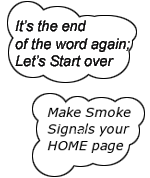

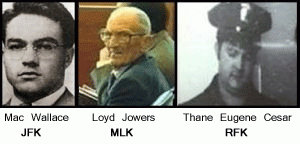
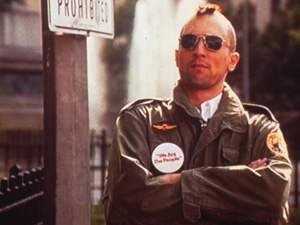

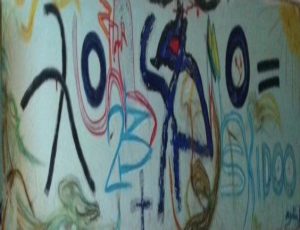
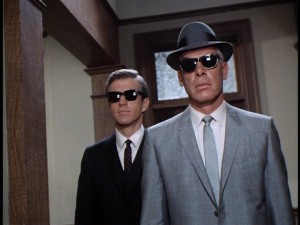
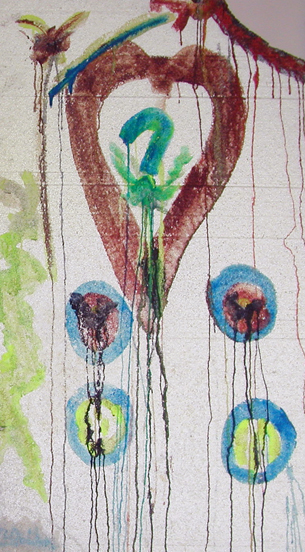

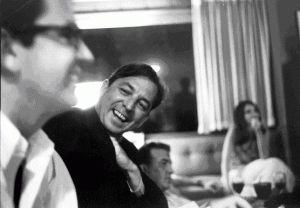
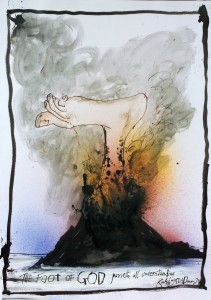
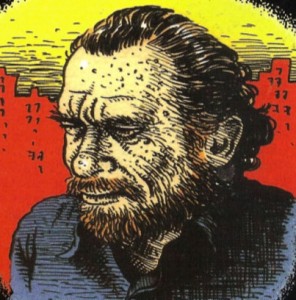
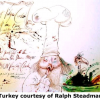
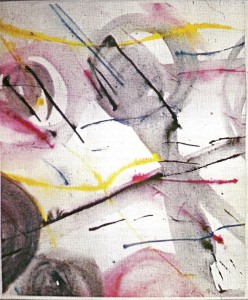
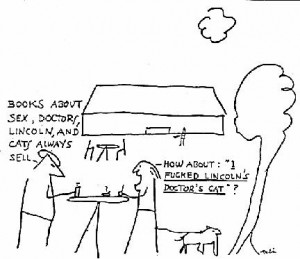
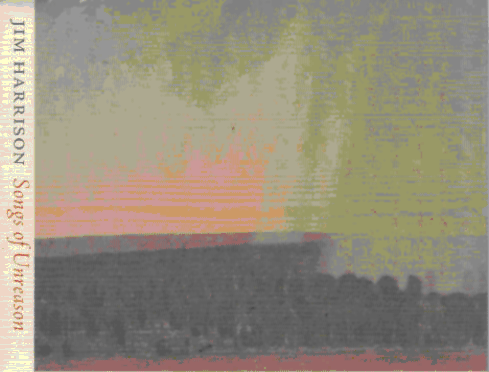
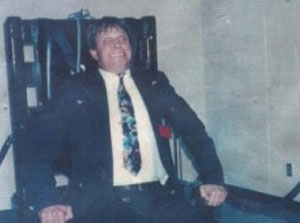
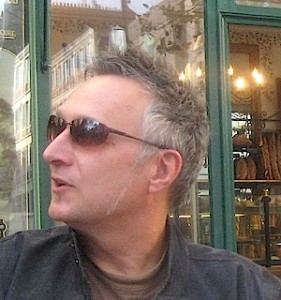
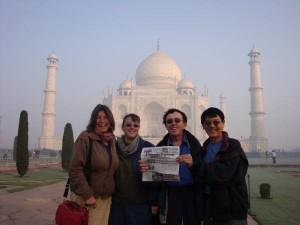
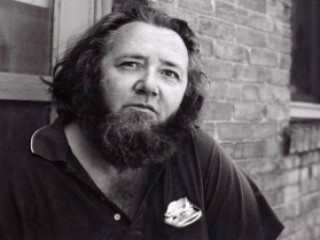

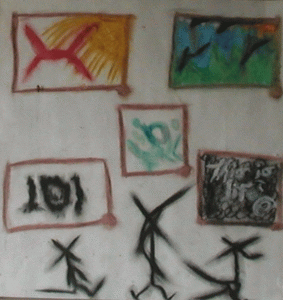
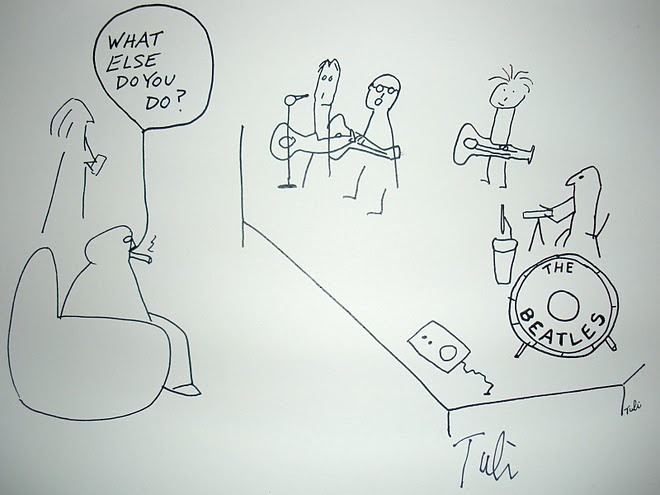

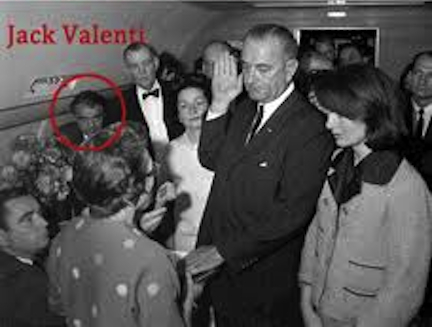
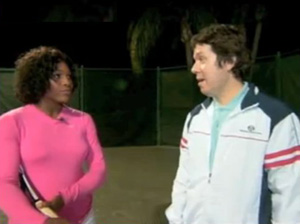
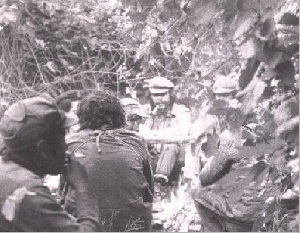

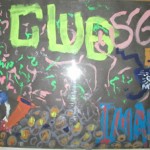
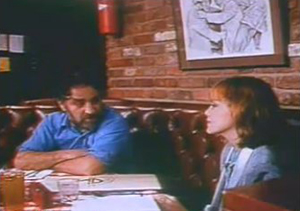
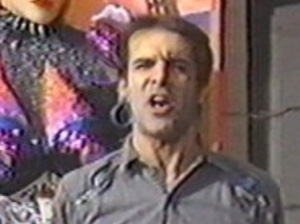
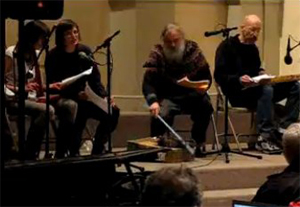

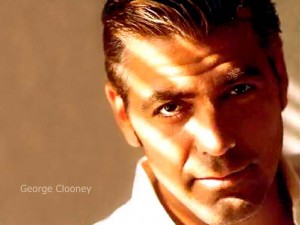

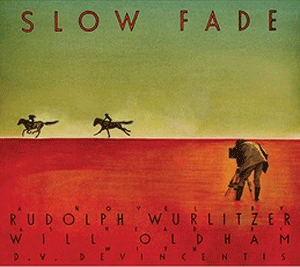
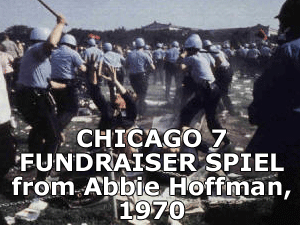
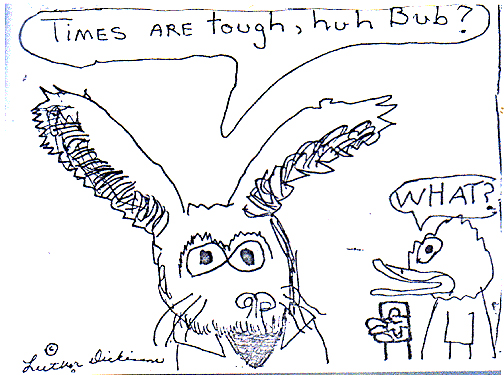
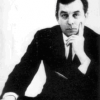
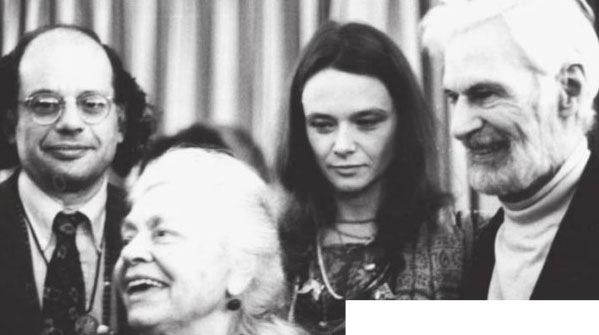 Three little sparrows
Three little sparrows 